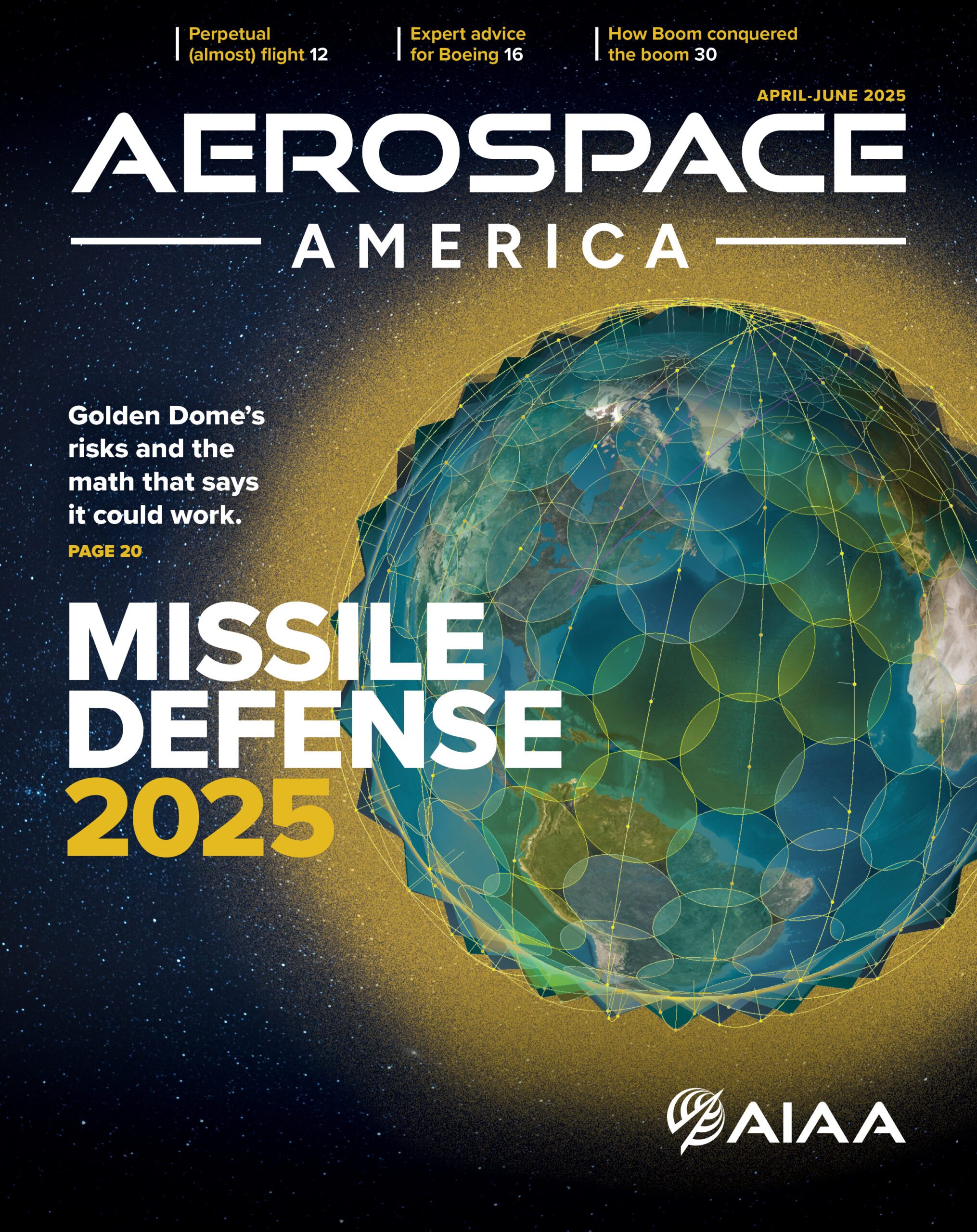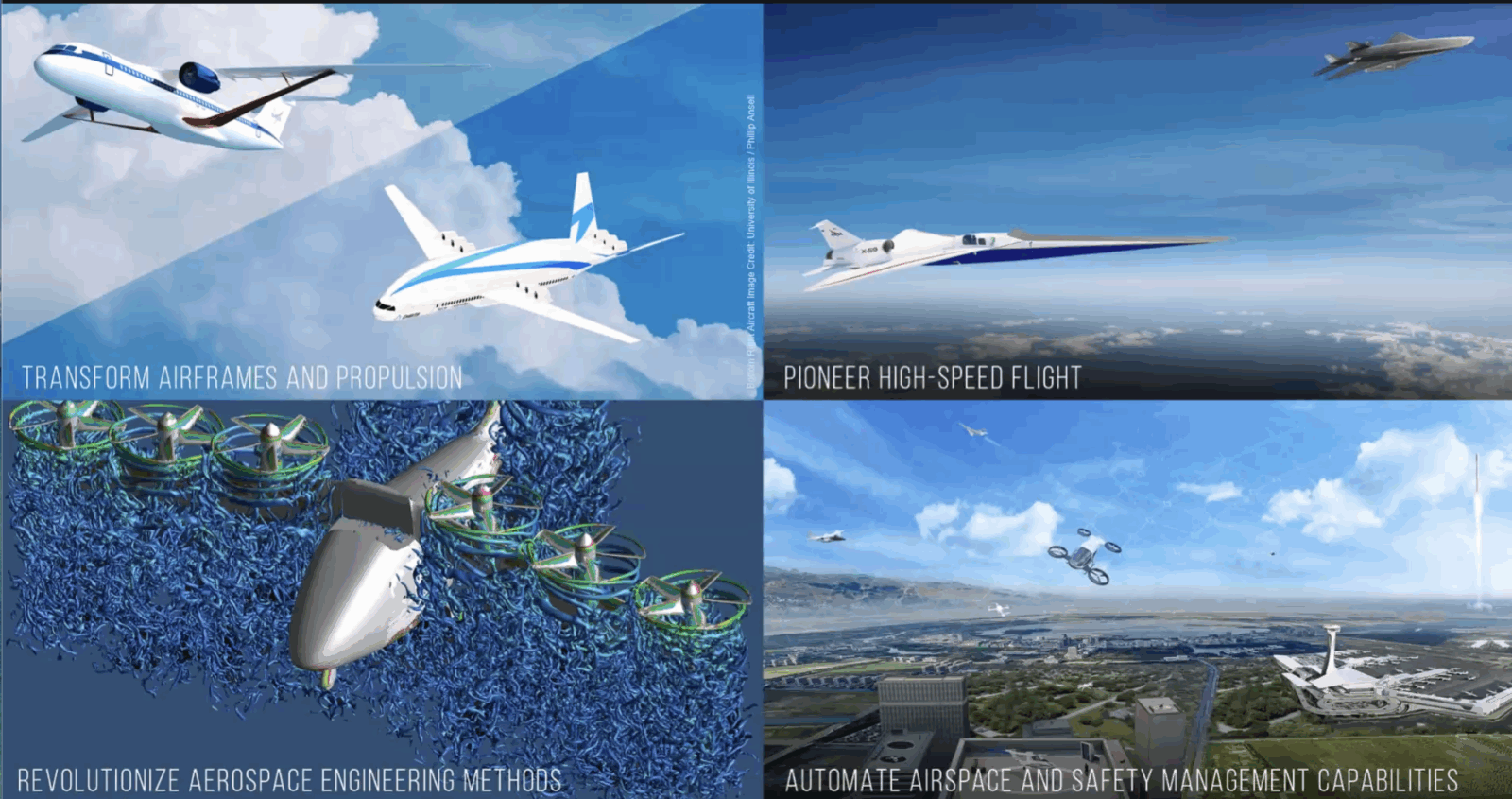Stay Up to Date
Submit your email address to receive the latest industry and Aerospace America news.
A graphic of the reorganized priorities of NASA’s Aeronautics Research Mission Directorate. Credit: NASA
NASA’s Aeronautics Research Mission Directorate will emphasize support for industry and FAA priorities as it grapples with a proposed budget cut of $346 million for fiscal year 2026, Bob Pearce, associate administrator for ARMD, said Tuesday during an AIAA webinar.
“The reality is that the aeronautics budget going forward is about a 40% reduction, so we’re looking at how do we continue to deliver value,” Pearce said, “perhaps by focusing a bit more on the partnerships we can create between our workforce and the community in the industry and certainly with universities.”
“I’m not going to overlook the fact that we’ve got a lot of challenges,” he added. “We have had lots of folks leave, but there’s opportunity as well.”
The aeronautics directorate received $935 million in funding for fiscal year 2025, which ends today. Congress has not yet approved a fiscal 2026 budget, and in many areas there remain vast differences between the funding sought by lawmakers and what was proposed by President Donald Trump in May. For NASA Aeronautics, the White House proposed $589 million. The bill passed earlier this month by the House Appropriations Committee funds aeronautics research at $775 million, while the Senate version kept NASA funding almost consistent with the fiscal 2025 level.
ARMD’s reorganized priorities were reflected in changes in the directorate’s four main focus areas, which Pearce outlined during the webinar. Gone from the titles of major focus areas is advanced air mobility, a general term for aviation technology, including electric propulsion, that aims to boost the affordability and accessibility of air transport. Instead, aspects of AAM technology are divided into three new buckets of aeronautics research: “Transform airframes and propulsion”; “Revolutionize aerospace engineering solutions”; and “Automate airspace and safety management capabilities.”
The fourth bucket is “Pioneer high-speed flight.”
Pearce said the elimination of AAM as a major focus doesn’t mean NASA will stop supporting and researching new technologies in this area.
“There’s a tremendous opportunity to think about the future airspace as a whole, and advanced air mobility is an element of that overall airspace transformation. So, we are working on that along with more automation in airspace safety,” he said, referring to the potential coordination of hundreds or thousands more drones and passenger air taxis over U.S. cities.
He added that such a proliferation of passenger aircraft could only happen with a greater degree of automated flight.
In the area of high-speed flight research, Pearce said the inaugural flight of NASA’s X-59 demonstrator is approaching. Built by Lockheed Martin Skunk Works, this needle-nose aircraft was designed to fly at speeds up to Mach 1.5 without producing a thunderous sonic boom, by virtue of its long, slender shape.
“We’re just a couple weeks away from the first flight and the start of our quest for a reduced sonic boom signature, a sonic thump that hopefully, if we find it to be acceptable to test communities, this can be the basis of supersonic noise rules going forward,” Pearce said.
As part of transforming airframes and propulsion, Pearce said NASA would continue assessing how or whether to continue development of the X-66 demonstrator that was to fly on a slim truss-braced wing in pursuit of fuel efficiency. NASA and Boeing announced in April they were pausing development of that aircraft as Boeing shifted to ground testing with an ultra-thin wing without a truss.
He said the question there was, “Do we want to fly or focus on ground-based research?”
About paul brinkmann
Paul covers advanced air mobility, space launches and more for our website and the quarterly magazine. Paul joined us in 2022 and is based near Kennedy Space Center in Florida. He previously covered aerospace for United Press International and the Orlando Sentinel.
Related Posts
Stay Up to Date
Submit your email address to receive the latest industry and Aerospace America news.




